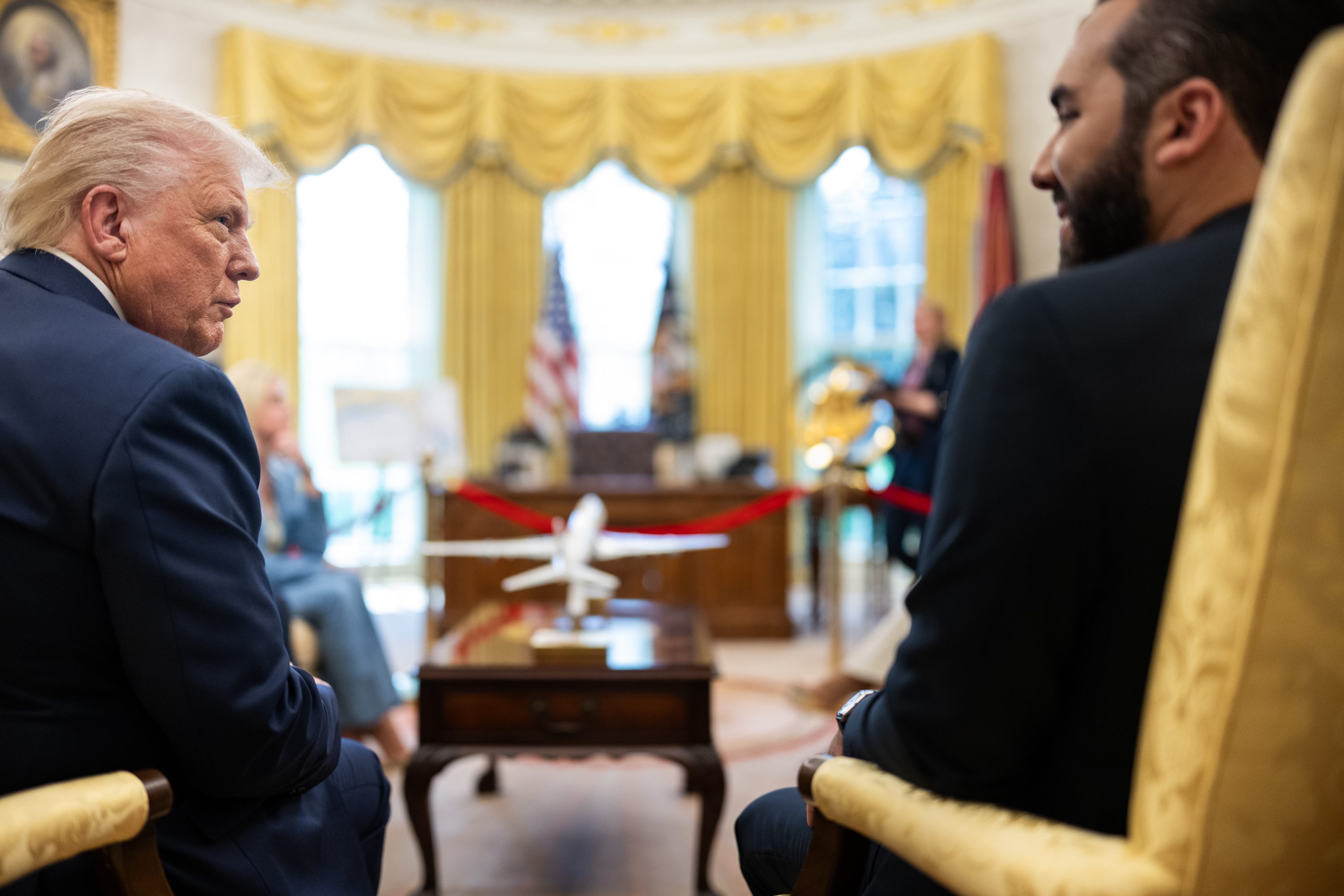Published by The Lawfare Institute
in Cooperation With

While President Trump’s revised Refugee Executive Order (EO) has been in the headlines for over three months, the Supreme Court just put its stamp on the case with equitable principles that go back centuries. In a per curiam order that stressed the age-old concept of balancing equities, the Court granted certiorari and stayed parts of the preliminary injunctions against the revised EO affirmed by the Fourth and Ninth Circuits, leaving in place the injunctions as they affected foreign nationals who have a “credible claim of a bona fide relationship with a person or entity in the United States.” In crafting this remedy, the Court recognized the interests of U.S. citizens, lawful permanent residents (LPRs), and entities in preserving the continuity of relationships with persons abroad. At the same time, the Court acknowledged the government’s “compelling need to provide for the Nation’s security.”
In its listing of questions to be addressed by the parties, the Court added the issue of whether the legality of the revised EO was moot as of June 14, on the date it was originally supposed to expire. The Court’s added question seems at first blush to be at odds with President Trump’s June 14 memorandum extending the EO’s operation, and with the terms of the stay granted by the Court, which allowed significant parts of the EO’s travel restrictions and other provisions to go into effect. However, the Court’s flagging of this issue highlights that mootness questions will certainly interest the Court when it hears argument on the case during the next Term.
By October, the travel restrictions in the EO, which last 90 days for the six countries subject to the ban (Iran, Libya, Somalia, Sudan, Syria, and Yemen) will have run their course. Time will be also likely be up on the EO’s 120-day restriction on admission of refugees. In addition, the clock will have run out on the EO’s provisions requiring assessments of the adequacy of antiterrorist screening measures and discussion with the six listed countries about any new or different information the U.S. will need for visa processing. The Justices will want to hear from the parties about why the Court’s stay and the terms of the EO have not effectively obviated the need for the Court to address further the legal issues in the case. Each side may argue for its own reasons that the question of the EO’s legality is “capable of repetition yet evading review,” the classic response to mootness arguments. The Justices’ receptivity to that rejoinder may hinge on whether the process of implementing the Court’s stay is orderly, or chaotic in the manner of the original EO’s January rollout.
The stay issued by the Court is also notable for what it did not include: any discussion of the constitutional issues raised by the EO’s challengers, including the Establishment Clause argument. This omission might be a product of the Court’s determination to narrow the issues relevant to a stay. Or it might be a reflection of a view held by a majority of Justices that the Establishment Clause is a vehicle ill-equipped for traversing the shifting landscape of foreign affairs (see Josh Blackman’s post here). The Court’s citation to Haig v. Agee (1981), in which the Court rejected a First Amendment challenge to revocation of the passport of a U.S. intelligence agent who wished to travel abroad, suggests the latter view. The Court’s citation to Haig v. Agee may trouble those who doubted the national security basis for the revised EO. Moreover, the EO’s critics will surely also be troubled that the Court’s stay permits the government to pause in the grant of refugee status to individuals abroad who may have a well-founded fear of persecution.
The approach to balancing the equities taken by the Court reflects time-honored equitable principles outlined by Chief Justice Roberts in his opinion for the Court in Nken v. Holder (2009). As Justice Frankfurter, one of the Court’s historic champions of judicial restraint, noted in a decision cited by Chief Justice Roberts in Nken, balancing the equities is a process “as old as the judicial system of the nation.” Indeed, the equitable discretion that both Roberts and Frankfurter found to be inherent in the Judiciary Act of 1789 was already well-established as “part of the traditional equipment for the administration of justice.” That balancing reflects a concern with crafting a decree that respects legitimate interests on all sides of a dispute. Avoiding gratuitous hardships to any party is part and parcel of the equitable discretion that Justice Frankfurter extolled.
Whatever the revised EO’s flaws as policy (see my post here), the Court has appropriately balanced the equities here. As Haig v. Agee suggests, the judiciary should extend a measure of deference to the executive branch’s view of national security, given the executive branch’s superior access to information and accountability to the people. That deference is not a singular prerogative of President Trump; rather, it is a function of the separation of powers that the Framers envisioned. Particularly when dealing with individuals such as applicants for refugee status abroad, the Court rightly observed that the government’s interest and executive power are “at their peak.”
To be sure, that deference is not absolute, as evidenced by the Court’s capacious carve-out for foreign nationals asserting a “credible claim of a bona fide relationship with a person or entity in the United States.” As a practical matter, this carve-out will allow regular visa-processing for individuals eligible for a family-based visa, such as the spouses, parents, children, and siblings of U.S. citizens (LPRs can also sponsor spouses and children). It will also allow regular visa-processing for individuals admitted to U.S. colleges and universities, hired to work at U.S. companies, and invited to speak by U.S. groups. It will not include most overseas applicants for refugee status, who do not fit under any of these rubrics and lack any previous ties to the United States. In other words, the stay is tailored to the interests of U.S. persons and entities alluded to in Justice Kennedy’s concurrence in Kerry v. Din (2015).
One wrinkle to watch is how the government implements the Court’s stay. Here the government has two alternatives. First, consider that the waivers established in section 3(c) of the revised EO cover virtually everyone included in the Court’s decree. The government could set up a waiver-like process, requiring U.S. citizen and LPR sponsors or foreign national beneficiaries to furnish evidence documenting a “credible claim” of a qualifying “bona fide relationship” with a U.S. citizen, LPR, or entity. The down side of this kind of process is its potential for litigation about what counts as a “credible” claim. Justices Thomas, Alito, and Gorsuch wrote a partial dissent from the Court’s stay expressing concern about the potential for a “flood of litigation” on such issues.
While the concern expressed in the partial dissent by Justices Thomas, Alito, and Gorsuch is legitimate, the government’s wisest course strategically is to streamline its determinations about who qualifies for the stay. Making U.S. family members, companies, and colleges jump through bureaucratic hoops could tilt the Court against the government on the merits, if the Court gets past the mootness inquiry next Term. In contrast, a simple and straightforward procedure would reinforce the trust in the government reflected by the Court’s cite to Haig v. Agee. Ideally, the government could simply issue an instruction to all consulates abroad to resume normal visa-processing for all claimed beneficiaries of family, employment, education, and related visas. Normal visa-processing already includes ensuring that each beneficiary is in fact the person he or she claims to be, possessing the relationship with a U.S. person or entity that provides the basis for the visa request. Therefore, ordinary visa processing will allow the government to comply with the Court’s stay, without the headaches of a separate, duplicative procedure.
In sum, the Court’s stay order respects the government’s legitimate interest in safeguarding national security as well as the challengers’ interest in maintaining relationships that are important to citizens, LPRs, and U.S. entities. Justice Frankfurter could not have balanced the equities better!



.jpg?sfvrsn=676ddf0d_7)

